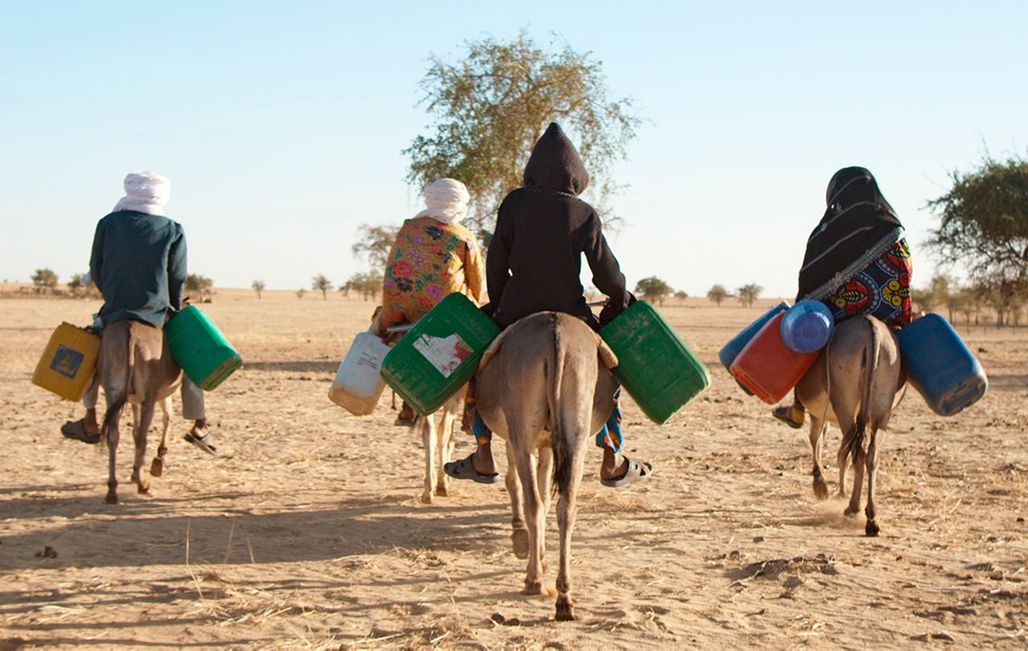
Marcher sur l’eau (Above Water): an interview with Aïssa Maïga

The water that runs so deep under our feet is our hope for survival. Aïssa Maïga takes us to Niger to the once prosperous but now arid region of Azawak. Over five trips to the village of Tatiste, she follows the daily life of the young Houlaye and her family – a harsh existence disrupted by drought. The hours of walking to find water, the wait for a borehole, school as a means to emancipation... Marcher sur L'eau (Above Water) opens our eyes with poetry to a reality that is rarely described. We meet with the director before the screening of the film in the Special Session "Cinema for the Climate".
Above Water Walking on water puts faces to the phenomena of global warming, drought and population displacement. How did you approach this exercise?
It was very important to be as close as possible to people and their experiences. I couldn't imagine this film being external, with a voice-over for example. I was lucky to have met gracious people who placed their trust in me. In fact, Guy Lagache was originally supposed to make this film. He worked with Ariane Kirtley, the president of the NGO Amman Imman. They first met Souri, who is irresistible. Then Guy Lagache had to leave the shoot for professional reasons and I was asked to take over the project. I chose to work with Ariane Kirtley, who had knowledge of this region of Niger that I did not know. I said to her:
“I want to tell the story of a family where everything is going well, but turned upside down by global warming and the lack of water.”
One member of the family is Houlaye, a teenager you follow in particular, who is very touching and humble.
When I arrived and saw Houlaye, she was very shy. In her classroom, I took out my phone, filmed discreetly and I found that she had an extremely cinematic face, with a lot of depth. The idea was also to have a young woman going to school. That's part of my story.
The film also evokes a little-known reality: the women of the Wodaabe Fulani, who go away for months at a time to work abroad and return with an income. What does the drought add to their plight?
That was one reason for choosing this ethnic group: women play a very important economic role. I wanted to show active, independent women who are exposed to such exile. It was a way of highlighting how the issue of global warming affects the issue of migration. In the recent past, the rainy season lasted several months, whereas today it lasts three months. Ponds and wells were filled for most of the year, families stayed together and did not need to be separated for months. These were rich ethnic groups with very large herds. These people were not in need one or two generations ago.
This underground water is a source of hope, but isn't this also a matter for the younger generations?
The parents have already rethought their way of life. The kind of yurts they live in is something that didn't exist before. They are nomads in the process of becoming sedentary. They have the opportunity to educate their children more easily and they are keen to do so. They focus on education. Learning is also an issue for some adults. They were herders, they are settling down and they will have to develop a mode of agriculture that is very different from their own. This is part of what happens off-screen.
In any case, drilling does not entirely solve the problem of the lack of water.
It means children who used to walk for miles no longer have to do so and to go to school. It also allows them to drink clean water, to generate small businesses around the village, and the borehole itself can be a source of income. However, a borehole is not a sustainable solution because it pumps up the water supply.
"Everyone is fighting for water," says one villager.
It's about peace, migration, health, daily survival and education. Everything stems from the water issue.
Then the water appears and everything comes back to life, the villagers, the fauna and flora. How did you capture this fleeting and rich moment?
I was under pressure and felt like I was making a heroic blockbuster. The water was only going to come out once, it's a geological phenomenon that you can't control. There were a lot of children, animals… We had to be able to capture everything. I owe it all to Rousslan Dion, my cinematographer who was really my partner in this film. It was an intense moment.


